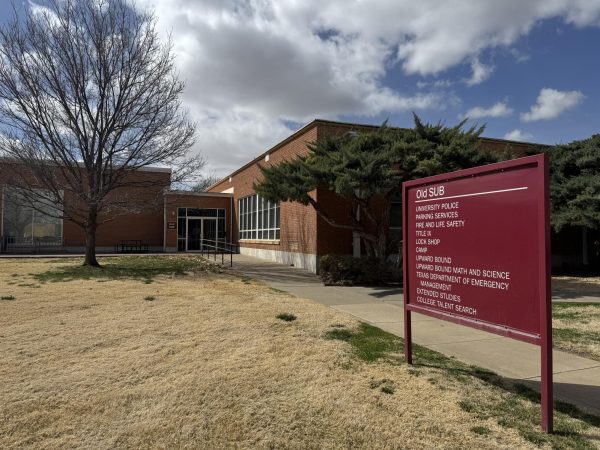Hispanic students struggle to obtain bachelor’s degrees due to financial stress
For many Hispanic people in the Texas Panhandle, pursuing a college education can feel overwhelming. Financial difficulties have been identified as the biggest barrier for Hispanic students looking to attend college. Many express a desire to seek financial assistance or scholarships but feel that receiving such support is impossible given their personal situations.
First-generation and low-income students face a higher risk of quitting college temporarily or dropping out entirely due to financial stress. A recent study by Pew Research has found that Hispanic people between the ages of 25-29 are the lowest demographic group to receive a bachelor’s degree, with only 23% obtaining one, trailing behind people in other ethnicities.
Madysen Whelchel, a Tascosa High School senior, says financial problems are stopping her from attending a four-year university. She plans on going to Amarillo College for two years to pursue a sonography degree.
Whelchel plans on only attending a two-year community college using the Thrive Scholarship to help pay for classes and books. “If I had the money, I would go for four year [degree],” Whelchel said.
Other students are not going to a typical two or year college but instead to a trade school for a much more affordable option. Cezar Salas, a senior at Tascosa, plans to go to trade school at AC.
“I’m going to go to trade school at AC and only go for maybe a year and a half or two years,” Salas said. “I don’t see [myself] going to four year [university] and being in student debt because I don’t have the money.
There are currently college financial solutions in the Canyon and Amarillo communities. Amarillo Hispanic Chamber of Commerce (AHCC), Los Barrios de Amarillo, TRiO Talent Search at West Texas A&M University, and AC all help Hispanic students obtain a bachelor’s degree.
The AHCC’s goal is to help local businesses connect to the Hispanic community with educational opportunities, networking, and resources. Jennifer Anguiano serves as the executive director of the AHCC.
“We need to think of solutions and not problems, so if we work together with the community, if the university and organizations like ours can partner up and open up these opportunities, open up these doors, and provide the resources that students need,” Anguiano said. “I think students have a great opportunity to use all of this and use it to their advantage because that’s what it’s going to do.”
Though the AHCC serves local Hispanic students, there remain some challenges. First, there is a membership fee depending on the individual’s commitment level. This can be a challenge for anyone struggling financially. However, the AHCC is an available resource for students.
Also serving the Amarillo community is Los Barrios de Amarillo. Mary Bralley serves as the President of the organization that provides career awareness, mentorship support, and scholarship opportunities for students in the Texas Panhandle.
“I would like for people to remember Los Barrios, as we are here to help students succeed, regardless of race, ethnicity, regardless of any of that,” Bralley said. “We want our community to be healthier, and one of the ways that we can make this community up here is to ensure student success, whatever that looks like, whether it’s college or trade school or certification.”
As LBdA is not well known or advertised, not many students know about their services. This can be a challenge, especially when Hispanic students are struggling to pay for college.
TRiO Talent Search, located on WT’s campus, benefits historically underrepresented students, like Hispanics, with mentorship and personal development initiatives. April Ramirez serves as the director of TRiO Talent Search.
“In our program, we do a lot of college cost breakdowns, and there are so many students who are receiving enough funding, but they don’t understand how that funding applies to their bill, what and all they’ll be billed for,’’ Ramirez said. “So, I think [the college billing cycle] is just, in general, just the understanding of how financial aid works and how it’s applied.”
While financials are a big issue, some believe other issues add up to the difficulty of being a college student. Mike Knox, vice president of enrollment at WT, believes the sense of belonging is an even bigger issue for students.
“Students who transfer from AC automatically are eligible for and receive scholarships, which is then at the help of cost,” Knox said. “We also have a Destination WT program, which is a smooth pathway. We data share with AC so that there are many few barriers and process-oriented challenges in making that transfer.”
AC is looking into why students don’t transfer to a four-year university. Bob Austin, vice president of enrollment at AC, says only 25% of AC students transfer to a four-year university.
“We think part of the reason is because your first two, three years of college are paid for,” Austin said. “You’ve relieved that burden on the family of having to come up with four to six years of tuition and fees, so we think part of the change is due to the fact that parents are saving money on the front end and, ideally, freeing up money, or making more money available for those families.”
Despite the efforts of these organizations, Hispanic students in the Texas Panhandle continue to struggle to obtain and pay for a college education, citing financial difficulties, lack of resources and the need to work to support themselves as major challenges. Without continued support and solutions to these issues, the gap in higher education between Hispanic students and other demographics is likely to persist.











